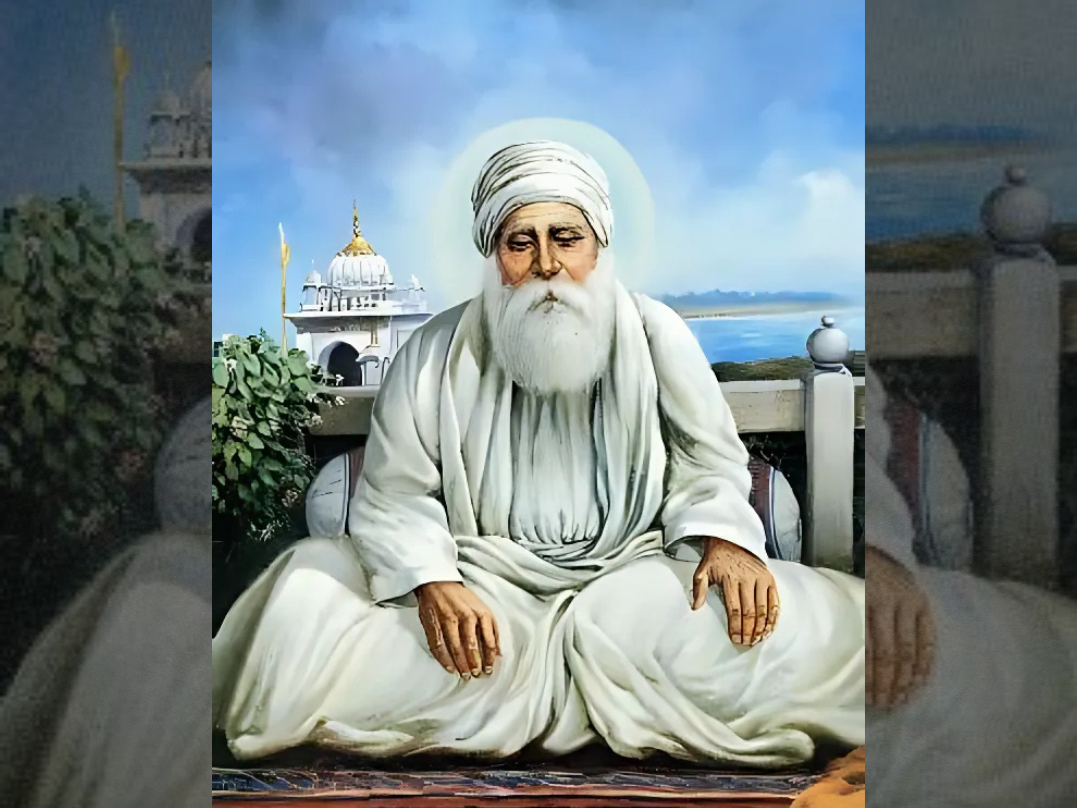

Celebrating Guru Amar Das Ji’s Gurpurab – May 11th

Imagine a quiet village near Amritsar called Basarke, somewhere around 1479, where a young man named Amar Das—son of a modest farmer-trader couple, Tej Bhan Ji and Mata Lachmi Ji—made his living running a small shop. By all appearances, he led an ordinary life: married to Mata Mansa Devi, father to two sons and two daughters. Yet, little did anyone know that this devoted family man would one day become the third Sikh Guru.
A Chance Encounter Sparks Devotion
At age 61, Amar Das happened to visit his brother’s home in Khadur Sahib. There, he heard his niece-in-law Bibi Amro Ji singing the hymns of Guru Nanak Dev Ji. The beauty and power of those words moved him deeply. Within days, he sought out Guru Angad Dev Ji himself. What began as respectful curiosity quickly blossomed into profound devotion. Amar Das set aside his pilgrimages and penances as a Hindu ascetic and immersed himself in Sikh teachings—and in service to the community.
Service as Spiritual Practice
Once at Khadur Sahib, Amar Das embarked on relentless seva (selfless service). He would rise before dawn, hike to the river to fetch water for the Guru’s bath, wash his clothes, and gather firewood for the communal kitchen (langar). People whispered that he’d grown so humble that he seemed almost invisible—an “old man forsaken,” some said. But his humility shone brighter than any fanfare.
A New Guru for a Growing Faith
When Guru Angad Dev Ji passed away on 29 March 1552, the decision of who would succeed him was clear. On Saturday, 16 April 1552, at the age of 73, Amar Das Ji was officially proclaimed the third Sikh Guru. He moved his base to Goindwal Sahib by the River Beas and, almost overnight, pilgrims began arriving in droves to sit in his presence.
Transformative Reforms
As Guru, Amar Das Ji tackled some of the era’s toughest injustices:
- Breaking Caste Apart
He made every visitor, from farmers to nobles, sit side by side in the langar hall—“First Pangat (the queue for food), then Sangat (the congregation).” No one could meet him until they’d shared a simple meal together. - Elevating Women
Long before it was common, he spoke out against sati (the burning of widows) and veils (purdah). He appointed women as preachers and leaders, shining a bright light on gender equality. - Organizing the Faith
To manage a community that was spreading rapidly, he created 22 “manjis” (district centers), each overseen by devoted volunteers—men and women alike—who carried Sikh teachings far and wide. - Enriching Spiritual Life
He composed over 900 hymns—among them the beloved Anand Sahib—that now resonate on the lips of every devout Sikh.
Moments of Grace and Challenge
Legend tells of the Emperor Akbar arriving at Goindwal, only to be asked to eat the humble langar rice before an audience—an act that greatly impressed him. On another occasion, when one of Guru Ji’s own sons-in-law tried to challenge his authority, the Guru’s response was pure humility: he gently bowed and even tended to his challenger’s comfort before quietly returning to Basarke for a few days of reflection. It was this unwavering compassion that turned obstacles into opportunities for grace.
Passing the Torch
After guiding the community for 22 years, Guru Amar Das Ji felt the time was right to choose a successor not by birthright but by merit. He selected his son-in-law, Bhai Jetha—later Guru Ram Das—recognizing in him the same spirit of service that had defined his own life. On 1 September 1574, at the age of 95, Guru Amar Das Ji left his mortal form, leaving behind a faith more unified, egalitarian, and vibrant than ever before.
Guru Amar Das Ji’s life reminds us that true leadership springs from humility, service, and an unshakeable belief in equality. Whether by sharing a meal, lifting someone’s spirits, or standing up for the marginalized, we carry his legacy forward each time we choose compassion over pride.